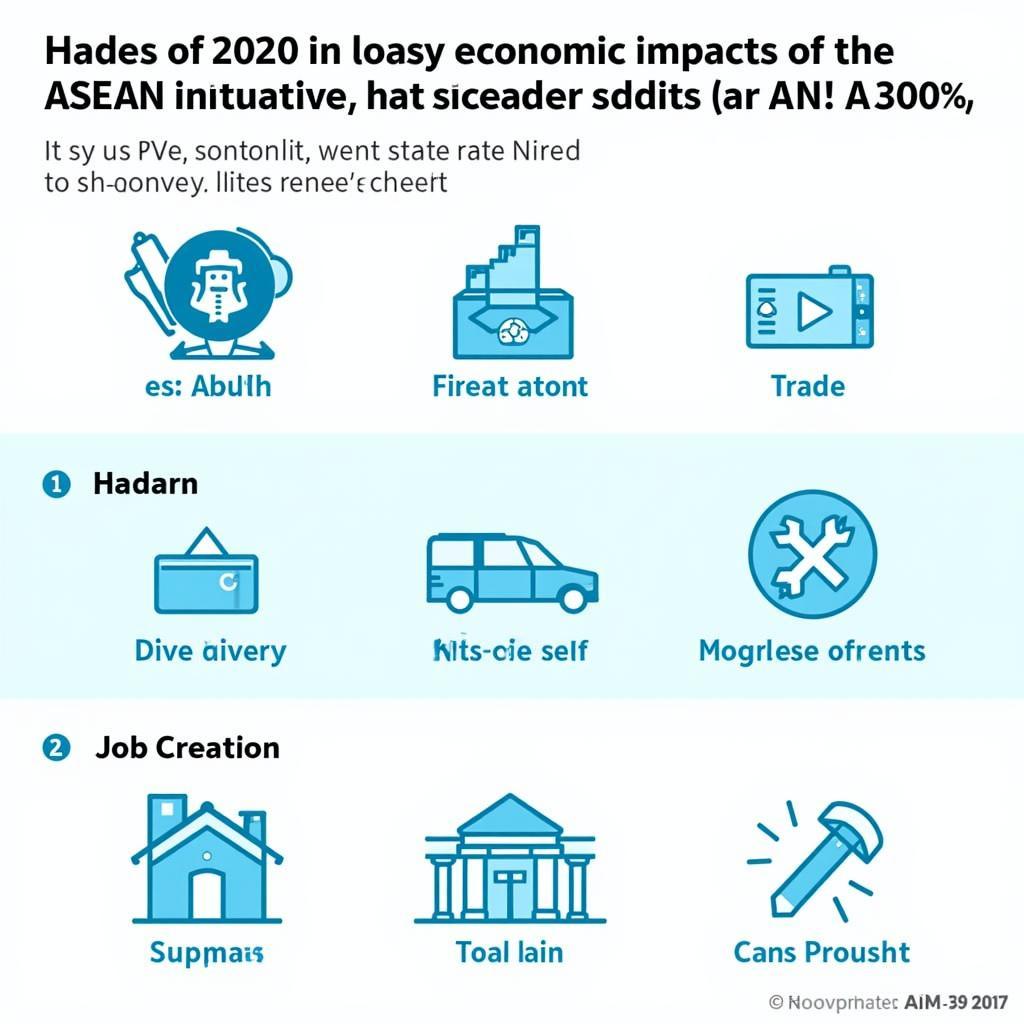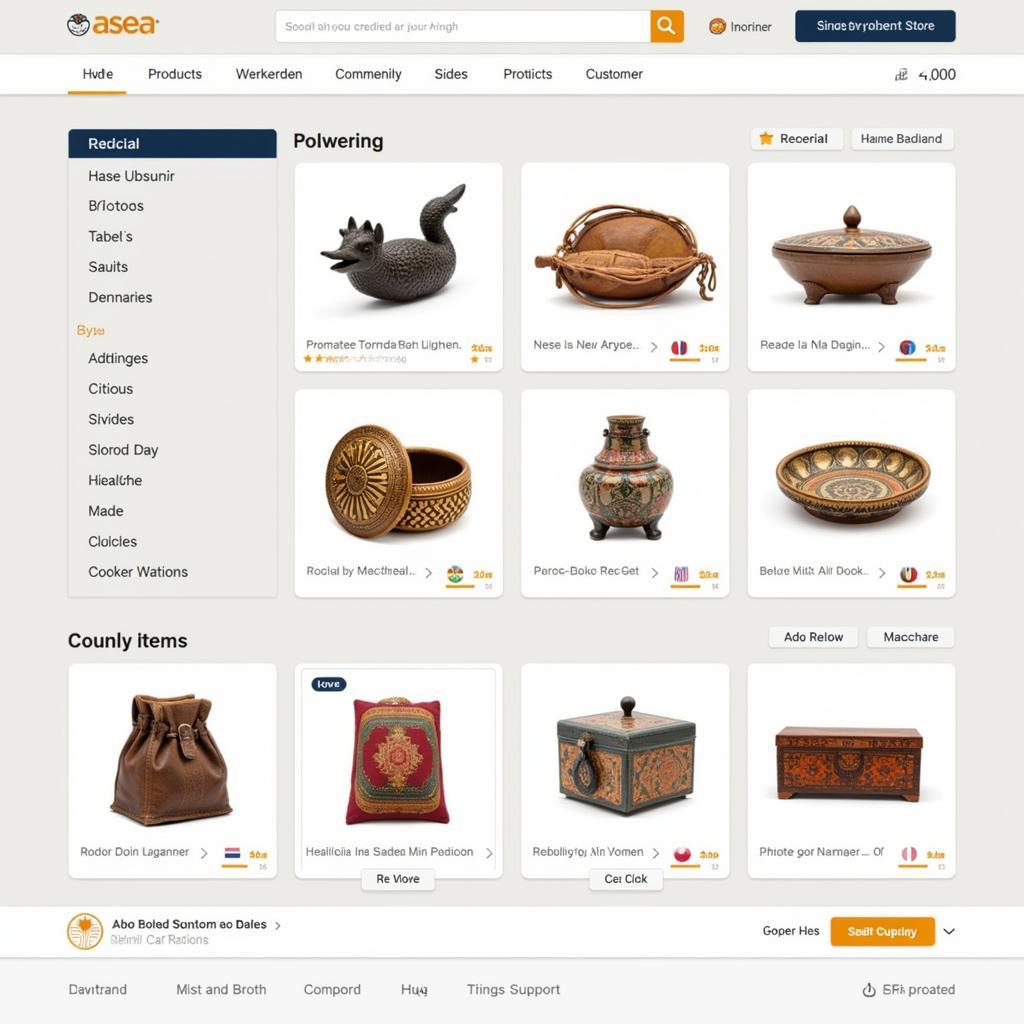The 10 Flags Of Asean represent a vibrant tapestry of cultures, histories, and aspirations, symbolizing the unique identity of each member state while collectively showcasing the region’s unity. These emblems are more than just colorful banners; they are powerful narratives of national pride and shared progress. Let’s delve into the rich symbolism behind each flag, uncovering the stories they tell about Southeast Asia’s dynamic present and promising future. asean 10 countries flags
Decoding the Symbolism: What do the 10 Flags of ASEAN Represent?
Each flag within the ASEAN family carries its own distinct meaning, deeply rooted in the nation’s history, beliefs, and values. They often incorporate symbolic colors, shapes, and emblems that represent key aspects of the country’s identity. Understanding these elements provides a deeper appreciation for the diverse cultural landscape of Southeast Asia.
Brunei Darussalam: The Crescent, Umbrella, and Hands
Brunei’s flag features a yellow field, representing the Sultan. The national emblem, consisting of a crescent, umbrella, and hands, sits at the center, symbolizing the monarchy, royal protection, and prosperity. The black and white stripes signify Brunei’s chief ministers.
Cambodia: Angkor Wat and the Tricolor
Cambodia’s flag proudly displays the iconic Angkor Wat temple, a testament to the nation’s rich Khmer heritage. The blue and red bands represent the king and the nation, respectively, while white symbolizes religion.
Indonesia: Simplicity and Strength in Red and White
Indonesia’s simple yet powerful flag, known as “Sang Saka Merah Putih” (The Sacred Red and White), comprises two horizontal bands of red and white. Red symbolizes courage, while white represents purity.
Laos: The Circle of Unity and the Mekong River
The Lao flag stands out with its central red disc, symbolizing the unity of the Lao people and the future of the country. The red represents the bloodshed in the struggle for independence, while the blue stripes signify the Mekong River, a lifeline for the nation.
Malaysia: Stripes of Glory and the Crescent of Islam
Malaysia’s flag, known as the “Jalur Gemilang” (Stripes of Glory), features 14 alternating red and white stripes representing the 13 states and the federal territories. The yellow crescent and 14-pointed star symbolize Islam, the country’s official religion.
Myanmar: A New Chapter with Vibrant Colors
Myanmar’s flag, adopted in 2010, consists of yellow, green, and red horizontal stripes representing solidarity, peace and tranquility, and courage and decisiveness, respectively. The central white five-pointed star symbolizes the country’s enduring union.
The Philippines: Sun, Stars, and Stripes of Valor
The Philippine flag showcases a unique design with a white equilateral triangle symbolizing liberty, equality, and fraternity. The golden sun represents unity, freedom, people’s democracy, and sovereignty. The eight rays symbolize the first eight provinces that revolted against Spanish colonial rule. The three stars represent the three main geographical divisions of the country: Luzon, Visayas, and Mindanao. The blue and red stripes signify peace, truth, and justice, and patriotism and valor, respectively.
Singapore: Crescent Moon and Stars of Progress
Singapore’s flag features a red and white horizontal bicolour. The red represents universal brotherhood and equality of man, while white symbolizes pervading and everlasting purity and virtue. The crescent moon represents a young nation on the ascendant, and the five stars signify the nation’s ideals of democracy, peace, progress, justice and equality.
Thailand: The Tricolour of Nation, Religion, and King
Thailand’s flag, known as the “Trairanga” (Tricolour), features five horizontal bands of red, white, blue, white, and red. The central blue band, wider than the others, symbolizes the monarchy. The white bands represent religion, and the red bands signify the nation.
Vietnam: The Golden Star on a Field of Red
Vietnam’s flag, known as the “Cờ đỏ sao vàng” (Red Flag with a Yellow Star), features a large gold star in the center of a red field. The red symbolizes revolution and bloodshed, while the five-pointed star represents the unity of workers, peasants, soldiers, intellectuals, and youth.
The 10 Flags of ASEAN: A Powerful Symbol of Regional Identity
The 10 flags of ASEAN, while distinct in their design and symbolism, collectively represent the spirit of cooperation and shared identity that binds the region. They signify the diverse yet interconnected nature of Southeast Asia, a region rich in history, culture, and potential.
What are some common misconceptions about the ASEAN flags?
One common misconception is that all ASEAN flags feature similar colors or symbols. While there are some recurring themes, such as the use of red and yellow, each flag is unique and reflective of its nation’s specific history and culture. Another misconception is that the flags haven’t changed much over time. Several ASEAN member states have updated their flags throughout history, reflecting changes in their political landscape and national identity.
Conclusion: The 10 flags of ASEAN are a testament to the region’s rich tapestry of cultures and shared aspirations for a brighter future. By understanding the symbolism behind each flag, we gain a deeper appreciation for the unique identity of each member state and the collective strength of the ASEAN community. what is asean countries
When you need support please contact Phone Number: 0369020373, Email: aseanmediadirectory@gmail.com Or visit: Thon Ngoc Lien, Hiep Hoa, Bac Giang, Vietnam. We have a 24/7 customer service team.


